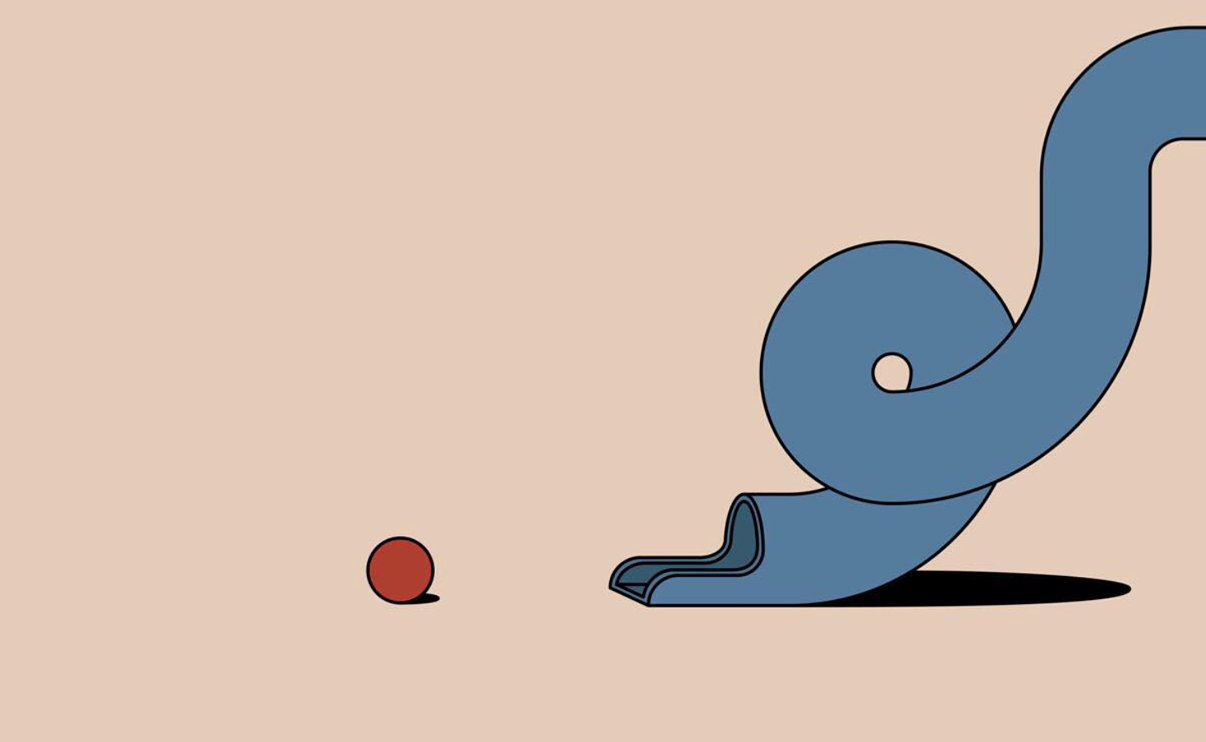Did It Hurt When You Fell From Heaven and Into Those Stirrups? IUDs, Pain, and Birth Control Journeys
thinx archive
·5 min read

by Kelsey Duchesne | 08/10/2016
Did It Hurt When You Fell From Heaven and Into Those Stirrups? IUDs, Pain, and Birth Control Journeys
ALL THE PROGRESSIVE PAPAS, PUT YOUR HANDS UP
That time my Dad came with me to get my IUD.
As someone who works in a professional world where queef puns are on my daily To Do list, it’s probably no surprise that I discuss my bodily functions with the ease and grace of a proud gazelle. Anything involving my body, from periods to diarrhea, was never off limits in my household. While my mother would nod knowingly and rub my shoulders as I described the consistency of my vomit (is it normal?? From a bad burrito or from a terminal illness??), my father has always been supportive and loving while very carefully maintaining a polite distance. If I asked him to pick up tampons for me at the store, he would leave the box on the kitchen counter, a chocolate bar perched on top. When I declared to him that I would not be going to school due to my severe period cramps, he would not give me the usual cross examination, but leave ginger ale in the fridge and call the school secretary to submit my absence. My father, the middle child smack dab in between brothers, never seemed entirely comfortable discussing my reproductive organs. That is, until I moved home from college one summer with a mission to get my first IUD.
With my mom living in a different state and all of my friends busy working on that highly anticipated Tuesday afternoon, I decided to ask my dad if he would drive me to the Planned Parenthood and back. I practiced the nonchalant way I would approach my Dad-- “Hey papa, are you *down* to hit up the local PP and then get some ice cream?", “Hey Dad, would you please accompany me to the most terrifying 30 seconds of my squeamish little life?” As I practiced my casual ask, I realized how much I wanted my Dad to come with me, though I couldn’t completely understand why. What I did know was that as much as I wanted this IUD (very forgetful pill-taker, over here) I was deeply afraid. I’m a self-proclaimed baby when it comes to pain-- when a doctor asks what my pain tolerance is on a scale of 1-10, I always answer 1, stone-faced, perhaps overly self-congratulatory of my self-awareness and honestly. I came to the realization that before diving into an experience that had been described to me as “extremely unpleasant,” all I wanted was one of my parents to be in the other room waiting for me.
When I asked my Dad, he said yes, no questions asked. We drove to the doctor together, and he sat in the waiting room and read People magazine, his guilty pleasure. After the fateful 30 seconds (not great, but I didn’t die) he asked me about my symptoms, took me to the pharmacy, and out for ice cream. He made me my favorite dinner.
The pain and fear I experienced on the day I got my IUD melted away a long time ago, and what remains are the memories of the day I had with my dad. His kindness and love made me feel supported and respected--he stood by my reproductive health decision without ever having to state it. It was a moment where my identity as a woman and a daughter came together ceremoniously, and it was a lot easier than I anticipated. It was a day where my dad saw me as an adult making her own health decisions, and where I saw him as a supportive parent and ally. Thank you to my Progressive Papa for sticking by me through the quease.
When It Looks Like A Flower But Stings Like A Bee: Pains & Pleasures of an IUD
By Lital Avni-Singer
Have you noticed IUDs have been blowing up lately? Seems like everyone and their mother has been throwing out their oral birth control pills for this swanky device. They are arguably the most safe and effective method of long-term reversible birth control that is currently available. They used to be recommended only to people who had already given birth, but are now increasingly being marketed towards young women who have not had children. But along with this excitement comes a heavy dose of anxiety: will it hurt when they put it in? There are endless stories splashed across the internet from women whose IUD insertion experience was immensely painful, even traumatic. Along with stories of agony are stories of reassurance, that getting an IUD was not as bad as they say. Even so, the risk of this extreme agony is enough to deter many young women from taking advantage of this newly popular BC method.
I am a 22-year-old woman, I have never given birth, and have been on the pill for about four years. The side effects have not been too bad, but I have never been great at remembering to take it every day at the same time, which has led to some potential-pregnancy anxiety (yikes!). So I started asking around about the IUD. I spoke to friends who have one, and love it. The progressive, feminist, pro-contraception community appears to have embraced it as a great BC choice for young, sexually active women. But my friends also spoke of one caveat: pain. Some said that the process of inserting the IUD was “literally the most painful thing I have ever felt in my life,” if only for a short amount of time. But STILL. The worst pain they have ever felt? That seemed extreme to me, so I asked my gynecologist about it. They told me that
everyone is different, but that it definitely wouldn’t be worse than the pain I felt when my ovarian cyst ruptured (a cyst on my ovary had ruptured recently; it was not dangerous but was debilitatingly painful).
Needless to say, this response was NOT AT ALL reassuring to me. That ovarian cyst rupture was extremely painful! Why would I want to risk putting myself through that again??
So I decided not to get an IUD for now. And since then this question has been nagging at me: Does the IUD insertion process necessitate risk of extreme pain? Why is there little or no management of this pain offered by health care providers?
OK let’s back up for a second. What actually is an IUD?
IUD stands for intrauterine device. It is a small, T-shaped gadget made of plastic that is inserted into the uterus and is more than 99% effective at preventing pregnancy. However, it does not protect against Sexually Transmitted Infections. There are two basic kinds of IUDs: hormonal and nonhormonal. The hormonal IUD releases hormones (shocker) much like the pill or the ring, which can make your periods lighter or even disappear entirely, and can be left in for up to 5 years. The nonhormonal has a little copper wire coiled around it. It does not interrupt your ovulation cycle in the way that the hormonal IUD does, and can sometimes make menstrual bleeding heavier, but can be left in for a very long time (up to 12 years). The copper acts as a spermicide (cool!).
How is the IUD inserted?
A speculum is inserted to open up your vagina.
The provider then swabs your cervix with an antiseptic, and an instrument called a “tenaculum” is used to hold the cervix in place.
Then the provider will use a “sound” to measure the depth of your uterus (often this is the part that hurts).
A tube containing the IUD is inserted through your cervix, the IUD is pushed into the uterus, the tube is pulled out, releasing the IUD into your uterus.
All in all, the entire process is over in a matter of minutes.
There are some available pain management techniques to aid in this process. Different providers will tailor their recommendations for the individual, but generally they advise to take a large dose of an NSAID (e.g. ibuprofen) the night before the procedure and the day of following it. Some prescribe a dose of misoprostol to be taken before, which softens the cervix. Less commonly, a “cervical block” may be administered, which is a local anesthetic.
But do all these painkillers work?
The answer is complicated, but the short version is: nope. Misoprostol has actually been shown to increase the pain of insertion, and cause other unpleasant side effects. For many, the administration of the cervical block itself is quite painful. And while NSAIDs are helpful for some, their effectiveness is nowhere near consistent. Basically, health providers have not found a really reliable way to manage this kind of pain. The only thing research has shown definitively is that anxiety about pain deters many women from getting IUDs, and that heightened anxiety and anticipation often makes the pain worse if they decide to go through with the procedure.
I wanted to know what kind of information about this would be easily accessible to a curious IUD-seeker, so I (obviously) hit up the internet. And wow, there is a lot to read. I read the top hits that came up for my Google search “IUD insertion pain,” and this is what I learned:
Bedsider and Shape published articles about IUDs that have some good information from gynecologists, but when it came to the question of pain, the sentiment was that it may or may not hurt, but you’re more at risk for pain if you have never given birth vaginally, and there is not much we can do about it. Shape quoted a doctor who said that if you can handle period pain, you can handle the “discomfort” of IUD insertion. I found this rhetoric to be dismissive of both the pain some undergo during IUD insertion, and that of menstrual cramps. Personally, I get really bad period cramps, and I don’t just try to ignore it and get through it--I take pain relievers! It is not just “uncomfortable,”at the doctor implied, it can be agony. This attitude is also dismissive of the anxiety so many have in anticipation of this pain. If you have ever been anxious about something, and someone told you to just “grit your teeth and bear it,” would that really help you?
A piece in Glamour described a young woman’s personal account of her recent IUD insertion. The realness of it was definitely appreciated; she described the process as very brief but “felt like labor pains.” Overall she was pleased with her IUD and said that the pain and discomfort were completely worth it for her. This attitude is common throughout many personal accounts of IUD/BC journeys: that it was absolute agony, but it was totally worth it. I am thrilled that so many women are sharing their stories and openly discussing their sexuality and BC journeys; but perhaps this is indicative of how some women internalize society’s dismissal of their pain?
Slate published a great article about pain and IUDs that actually acknowledged how this often excruciating pain, or risk of pain, is a problem. Wow, how novel. But the article did not delve into the causes of this problem. There seem to be many legitimate pain management options available to women with labor pains, but not to women who want to prevent pregnancy (not to equate labor with IUD insertion, obviously these are not comparable experiences). This all seems to me like another example of deep-seated subconscious manifestations of the patriarchy, that young women somehow deserve whatever pain and suffering they undergo in order to use effective contraception, because of the persistent stigma surrounding female sexuality--that their pain is somehow not important or not real, because women stereotypically have a lower tolerance for pain than men do.
It appears to me that some changes must be made. I want more and better research on pain management strategies for IUD insertion, and research that is inclusive of the experiences of transmen and other gender-nonconforming people (cis-women aren’t the only ones who can benefit from IUDs!). And until then, I would like health care professionals to be better trained in supporting those who have legitimate anxiety about the pain, and to be as transparent as possible about the process. We should not have to prepare for this by frantically reading potentially unreliable articles on the Internet, that will likely just make us more anxious. Anyone who wants to reap the many benefits of IUDs should be able to get one without risk of pain and trauma.
Important note: Much of this article uses gender-binary language to describe experiences with IUDs. As a cis-woman, this is the perspective I know and therefore the one I feel comfortable representing. But it is absolutely not the only important perspective on IUDs and birth control. Trans men and gender-nonconforming people people are often excluded from conversations about birth control, as seen in the articles I reference here, and also from the important research that studies it. This is a problem because, as I mentioned earlier, cis-women are not the only people who can benefit from birth control!
Lital Avni-Singer
by Kelsey Duchesne


